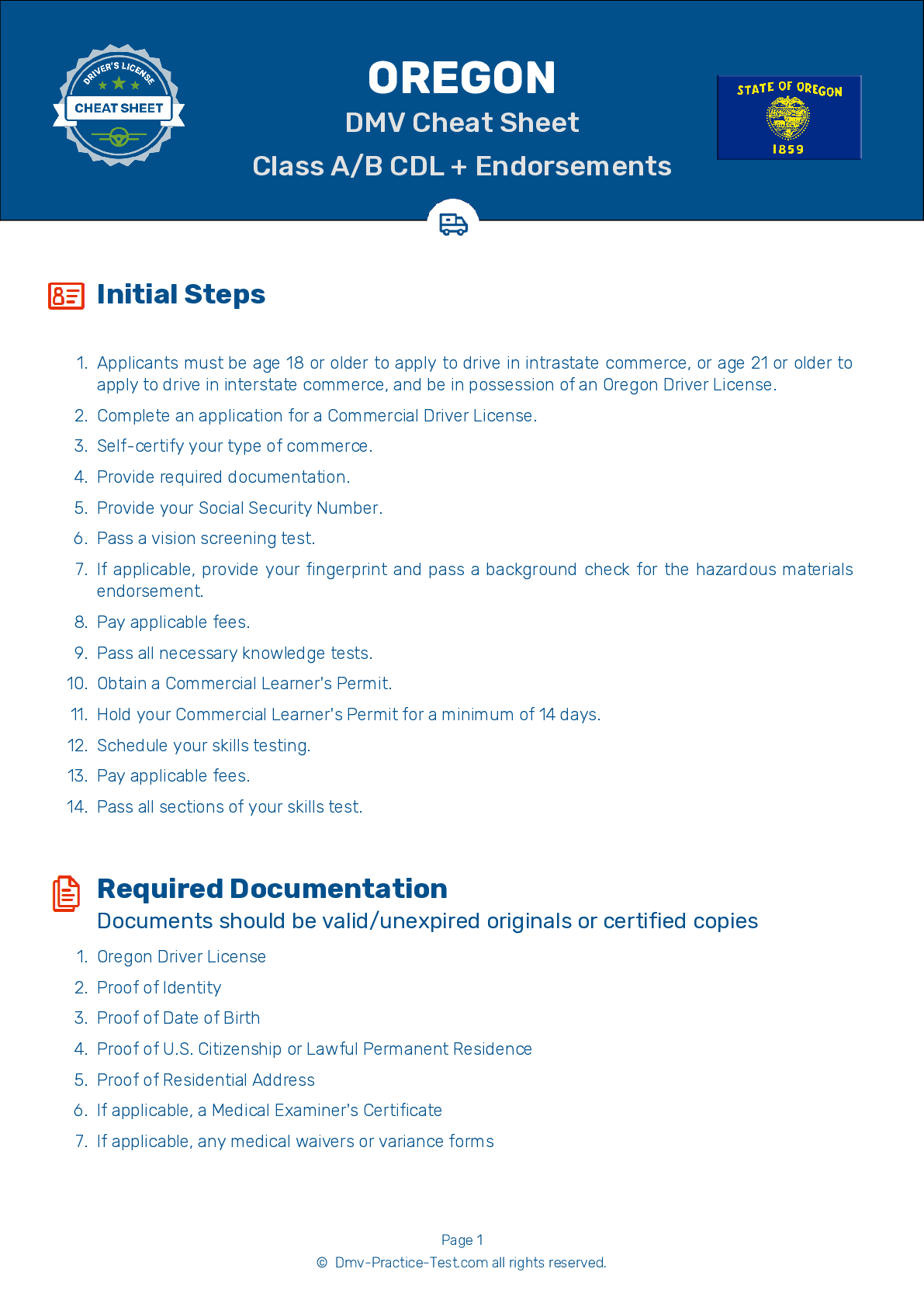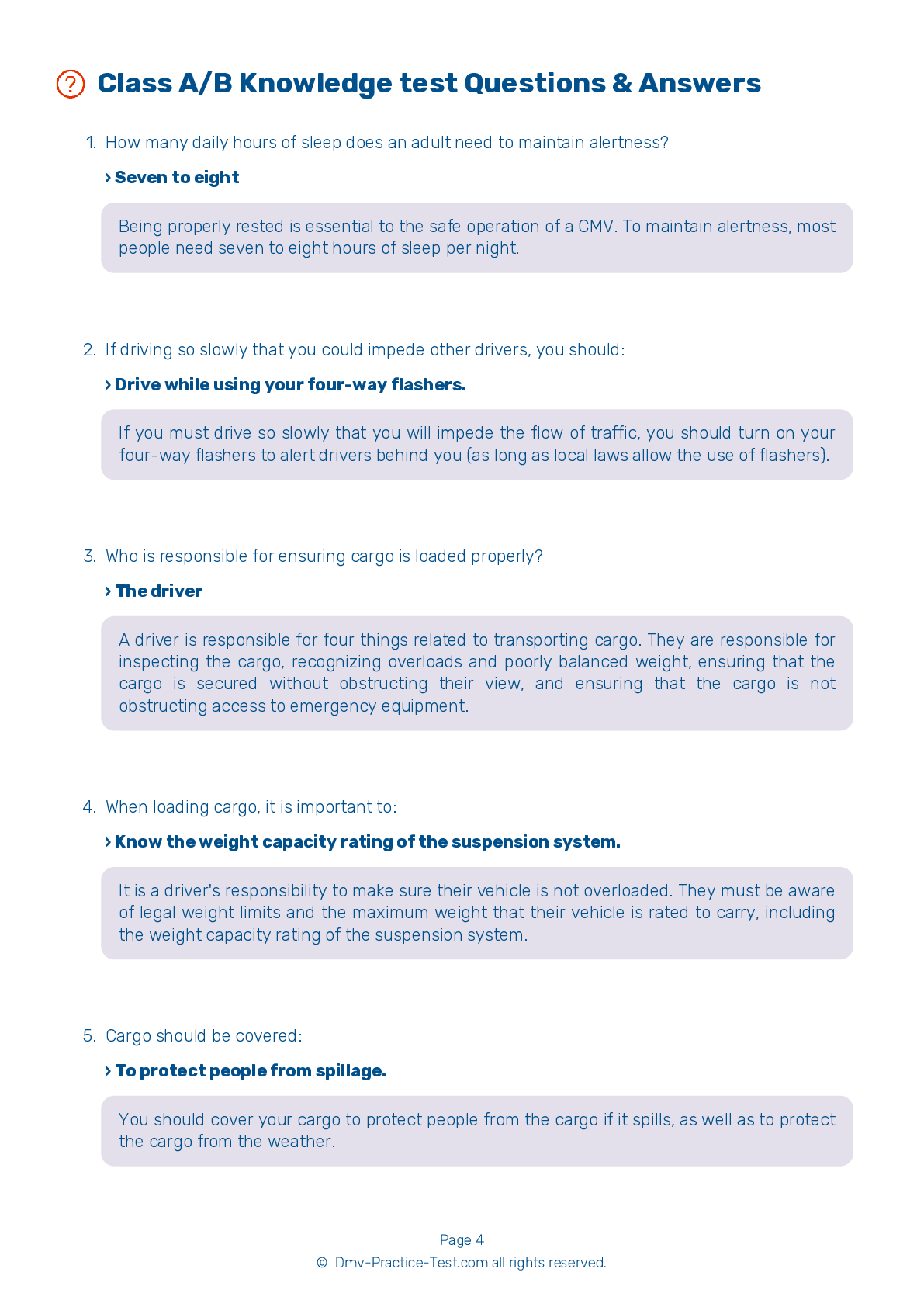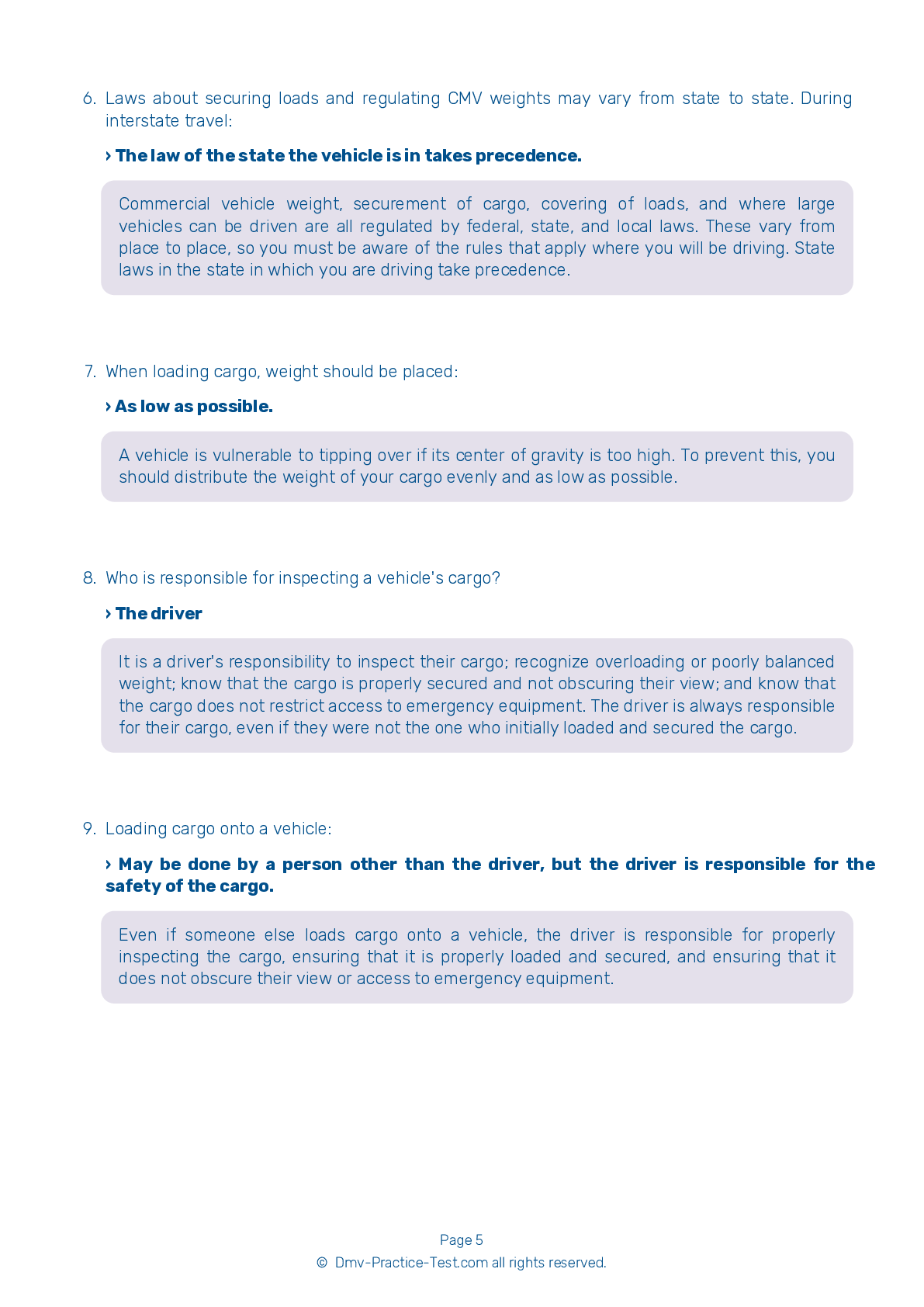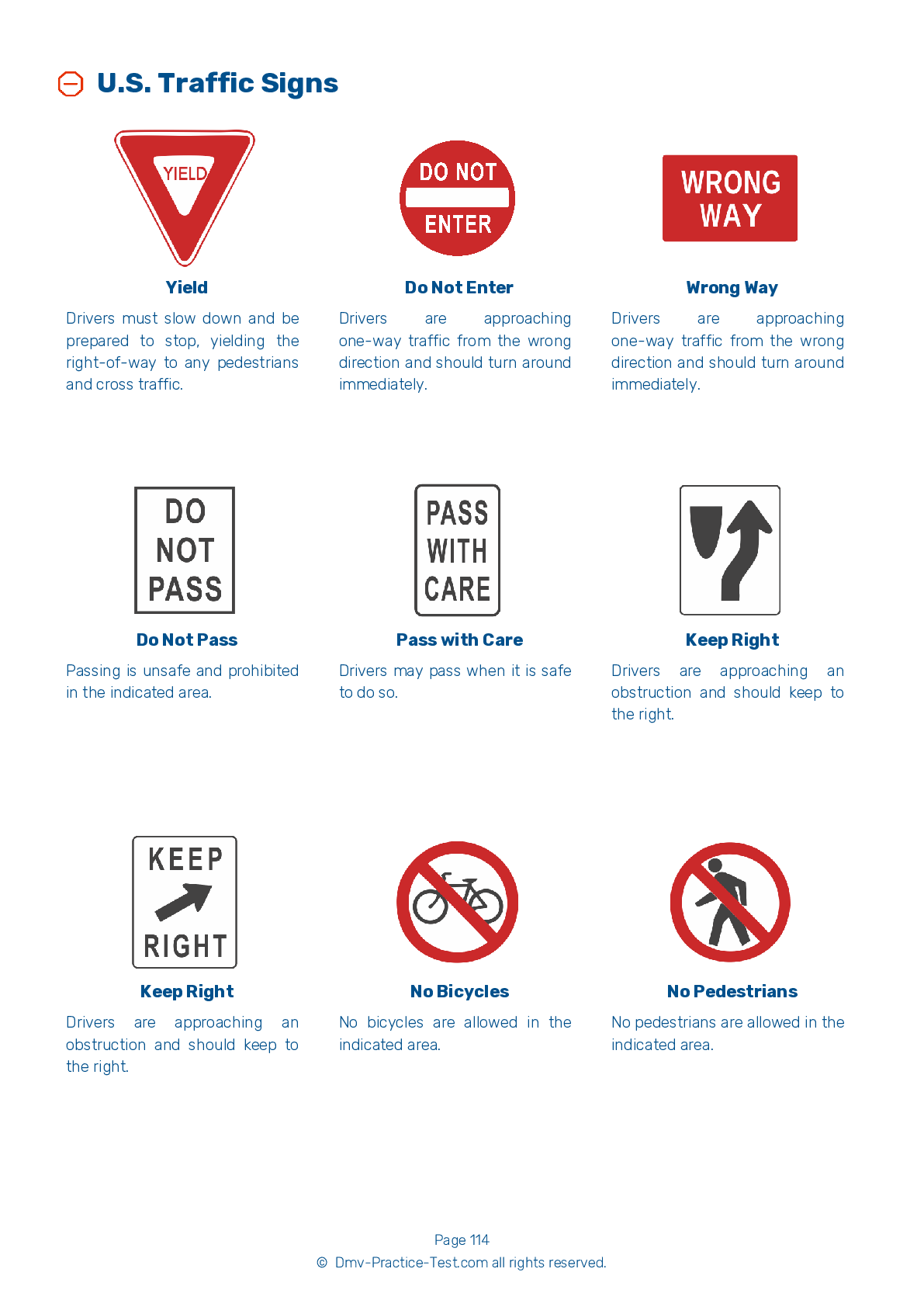HazMat #2
Hazmat Test | Oregon 2025 #2 Page 5 of 5
On our website, we provide FREE practice - CDL hazmat test online! The official exam test consists of several obligatory parts, with all of them checking your knowledge of different blocks of road rules. If you need to obtain a OR CDL hazmat endorsement in 2025, practice as much as possible. Free sample tests published on our website will help you check and improve your knowledge and boost your grades. Please bear in mind that Oregon requirements for issuing a hazmat endorsement for CDL may vary from those established in other states.
30
24
20
25 . When transporting hazardous materials, placards:
When required, hazardous materials placards must be placed on all four sides of a vehicle transporting hazardous materials.
26 . There may be restrictions on the transportation of explosives or hazardous waste in certain areas. These restrictions:
Only apply if transporting more than 1,000 pounds of a material.
Before transporting hazardous materials, you should research any restrictions that may apply to the routes you plan to take.
27 . Who is responsible for identifying the hazard class of a hazardous material?
Everyone
The shipper of hazardous materials is responsible for using the hazardous materials regulations to determine the product's identification number, proper shipping name, hazard class, and packing group. They are also responsible for determining the correct packaging, labels, markings, and placards to use.
28 . If a shipping paper describes both hazardous and non-hazardous materials, the items can be distinguished by:
The hazardous materials being written larger than the non-hazardous materials.
If a shipping paper describes both hazardous and non-hazardous materials, the hazardous materials must be distinguished in one of three ways. They must be entered first on the shipping paper, highlighted in a contrasting color, or marked with an "X" in a column titled "HM."
29 . In general, when loading a tank with flammable liquids:
The filling hole should be locked during loading.
Before loading or unloading a tank with flammable liquids, you should turn off the engine, unless running the engine is necessary to operate a pump. Ground the tank before opening the filling hole and maintain the ground until after closing the filling hole.
30 . If a driver is given a leaking package or shipment, they should:
Get someone else to drive it.
It is a driver's responsibility to refuse packages or shipments of hazardous materials if they contain leaks.
2025 Oregon | Frequently Asked Questions
A CDL Class B license in Oregon allows a driver to operate single vehicles with a Gross Vehicle Weight Rating (GVWR) of 26,001 or more pounds, or a vehicle towing another not exceeding 10,000 pounds. This includes buses, farm labor vehicles, and any vehicle designed to transport 16 or more passengers (including the driver).
A Class B CDL license in Oregon allows a driver to operate single vehicles with a GVWR of 26,001 or more pounds, or tow a vehicle not heavy than 10,000 pounds. It covers vehicles like city buses, delivery trucks, dump trucks with small trailers, and large straight trucks.
To acquire a Class B CDL license in Oregon, you must be at least 18 years old (21 for interstate driving), have a valid Oregon driver's license, pass a vision test, and pass the General Knowledge exam. You'll also need to pass a skills test which includes pre-trip inspection, basic controls, and on-road driving. A medical examination is also required.
In Oregon, to qualify for a Class B CDL license, you must be at least 21 years old for interstate driving and at least 18 years old for intrastate driving. You must also pass a knowledge test, a skills test, and a medical examination.
Specific endorsements aren't necessary for a Class B CDL license, but they can expand your driving opportunities. Endorsements are additional qualifications for driving certain types of vehicles or transporting specific cargo, like hazardous materials. To get an endorsement, you must pass a specific knowledge test.
The Class B CDL skills assessment in Oregon includes a pre-trip vehicle inspection to ensure the vehicle is safe to drive, a basic vehicle control test to assess your ability to handle the vehicle, and an on-road driving test to evaluate your ability to drive safely in various traffic situations and road conditions.
Yes, Class B CDL license holders are limited to operating vehicles that are under 26,001 pounds or towing vehicles that weigh less than 10,000 pounds. They cannot operate Class A vehicles without the appropriate license. Additionally, they may need specific endorsements to drive buses, tank trucks, or transport hazardous materials.
Yes, it is possible. The Oregon DMV provides the written Class B CDL test in several languages other than English. However, federal regulations require that all CDL holders understand English well enough to converse with the general public, understand highway traffic signs and signals, respond to official inquiries, and make entries on reports and records.
Yes, you can request accommodations for the Class B CDL written exam in Oregon if you have a documented disability. The Oregon DMV provides various accommodations such as sign language interpreters, extra time, and separate testing rooms. You must make your request in advance and provide appropriate documentation to support your need for accommodation.
Yes, if you do not pass the Class B CDL written test in Oregon, you can retake it. However, there's a waiting period of one day before you can try again. The test can be retaken multiple times, but after three failures, you must wait 28 days before the next attempt. Each test attempt requires a separate fee.



